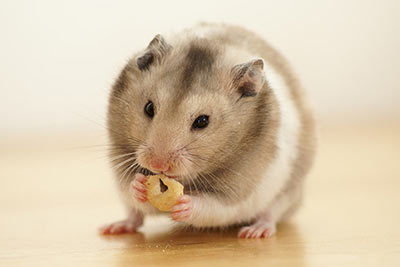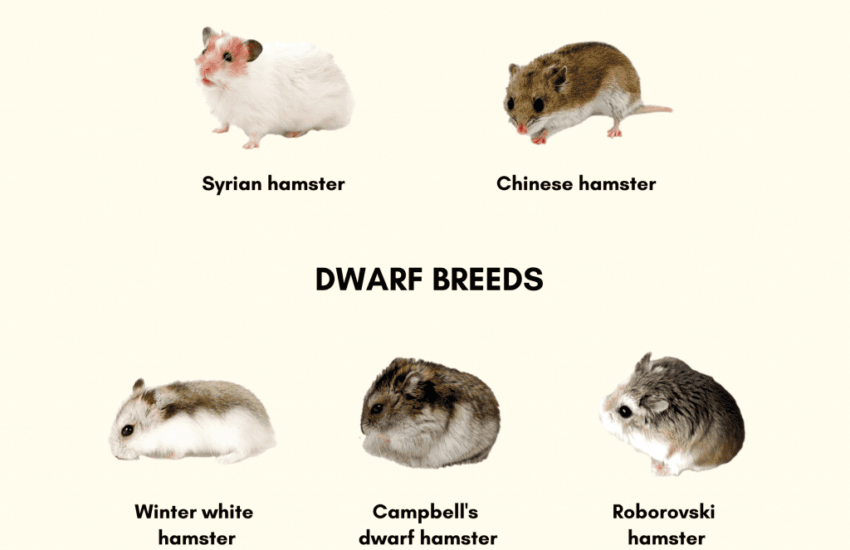Distinct Features of Hamster Breeds
Understanding Hamster Breeds
Hamsters are fascinating little pets known for their playful nature and variety of breeds. Each **hamster breed** offers distinct characteristics that make them unique, with variations in size, color, coat type, and temperament. Whether you’re looking for a cuddly companion or an energetic explorer, understanding the unique **features of hamster breeds** can help you choose the right one for your home.
Popular Hamster Breeds
Among the various hamster breeds, the **Syrian hamster**, also known as the golden hamster, stands out as one of the most common pet varieties. These hamsters have a robust size, typically 6 to 7 inches long, and come in various colors and patterns including dark gray, black, and golden. Their personalities are often described as friendly and curious. In contrast, the **Dwarf hamster**, such as the Roborovski or Campbell’s Dwarf hamster, is much smaller, measuring approximately 4 inches in length. They are known for their social nature and keen agility, making them fun to watch. For many hamster lovers, the size and friendliness influence their choice, highlighting the importance of understanding each breed’s characteristics.

Physical Characteristics
The physical traits of hamsters are as varied as their temperaments. **Syrian hamsters** often have a comparatively plush and soft coat, while **Dwarf hamsters** may come with shorter fur. Another key distinction is in their coloration. For example, the **ugly teddy bear hamster**, a breed that has gained popularity, has a unique long-haired coat that gives it a cuddly appearance. Understanding these **physical characteristics** helps prospective hamster owners decide which breed mirrors their preferences and lifestyle.
The Temperament of Hamster Breeds
Different hamster breeds exhibit diverse behaviors and temperament traits that significantly affect their suitability as pets. For instance, **Syrian hamsters** are generally solitary animals and prefer to live alone, whereas many **Dwarf hamster** breeds can be more social and may enjoy the company of other hamsters, especially if they are raised together. When considering which hamster to adopt, it’s essential to research the specific breed’s behavioral tendencies. Maintaining a good environment and socializing them properly can help in ensuring they exhibit friendly characteristics.
Activity Levels
When evaluating **activity levels**, it is worth noting that hamster breeds greatly differ. Some breeds, like the **Syrian hamster**, are typically more active during the evening or night, showcasing their energetic playfulness as crepuscular creatures. Other breeds like the Roborovski Dwarf hamster are incredibly agile, enjoying burrowing and exploring around their cage. This behavior adds to the joy of ownership, as observing their antics can be entertaining for owners. Understanding each breed’s **activity levels** can establish clearer expectations for care, attention, and interaction.
Care Requirements for Different Breeds
Different breeds of hamsters can come with varied care needs. For instance, the more solitary **Syrian hamster** requires larger cages for their territories, while groups of Dwarf hamsters can be housed together in a spacious environment. Additionally, the long-haired varieties, like teddy bear hamsters, need extra grooming to avoid matting. Using modular and adaptable housing can cater to the specific needs related to care. Researching these **care requirements** thoroughly aids in better preparation for the joys of hamster ownership.
Caring for Your Hamster
Caring for a hamster is an enriching experience that requires some knowledge about individual breeds. Each breed comes with its grooming needs, dietary preferences, and social requirements. For instance, **Syrian hamsters** need to be consistently interacted with to keep them friendly, while Dwarf hamsters may thrive in a pair if raised together. Adopting the right hamster care practices helps in creating a positive environment, and a breeding ground for long-term health and happiness.
Grooming Practices by Breed
Grooming varies between hamster breeds, especially between short and long-haired types. Long-haired hamsters, such as the teddy bear hamster, require regular grooming to maintain their hygiene and prevent fur tangles. In contrast, short-haired hamsters may require less grooming, generally only needing a weekly brushing to keep their coat healthy. Knowing these **grooming practices by breed** can prevent fur matting and keep your pet comfortable.
Nutrition Needs of Different Breeds
Understanding the distinct **nutrition needs of different hamster breeds** is vital to their health. Each breed has dietary requirements, with young hamsters needing protein-rich foods suitable for quick growth. Adult hamsters typically require a mix of grains, vitamins, and protein-based treats, ensuring a balanced diet. Tailoring your hamster’s nutrition needs based on their breed helps in promoting longevity and maintaining their energy levels.
Conclusion and Key Takeaways
Understanding the distinct features of hamster breeds is essential for anyone looking to bring these adorable pets into their home. Each breed comes with unique physical characteristics, behaviors, and care requirements. Syrian hamsters are known for being solitary and largely friendly, while Dwarf hamsters tend to be more social. Knowing how to care for them properly, including grooming and nutritional needs, can greatly assure a healthy and enjoyable pet ownership experience. With the right knowledge, you can enjoy the playful nature of these animals.
FAQ
1. What are the most popular hamster breeds?
The most popular hamster breeds include Syrian hamsters, Roborovski dwarfs, and Campbell’s dwarf hamsters. Each breed is loved for its unique characteristics, from behavior to physical traits.
2. How often should I clean my hamster’s cage?
Generally, it’s recommended to clean your hamster’s cage at least once a week, removing waste and uneaten food. A deep clean should be done every month to ensure a healthy environment.
3. Can different hamster breeds live together?
Typically, Syrian hamsters should be housed alone, whereas some Dwarf hamster types can live in pairs or groups. Make sure to verify the species to prevent aggressive behaviors.
4. What is the lifespan of various hamster breeds?
Most hamsters live between 2 to 3 years, but with proper care, some Dwarf hamsters may even reach up to 4 years. Factors like breed and environmental care play a significant role in longevity.
5. Do hamsters require special diets?
Yes, hamsters benefit from a varied diet composed of pellets, fresh fruits and vegetables, and occasional protein-based treats. Each hamster breed has specific dietary needs that can affect its health.
